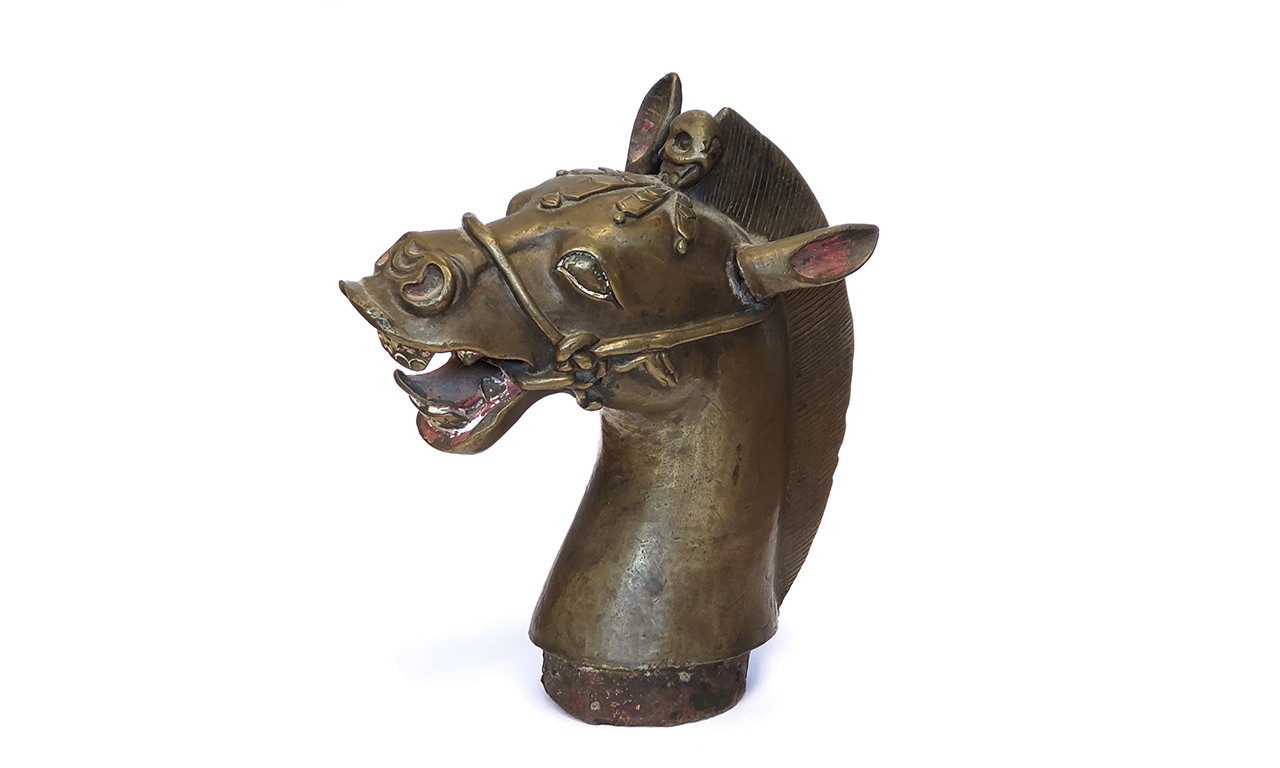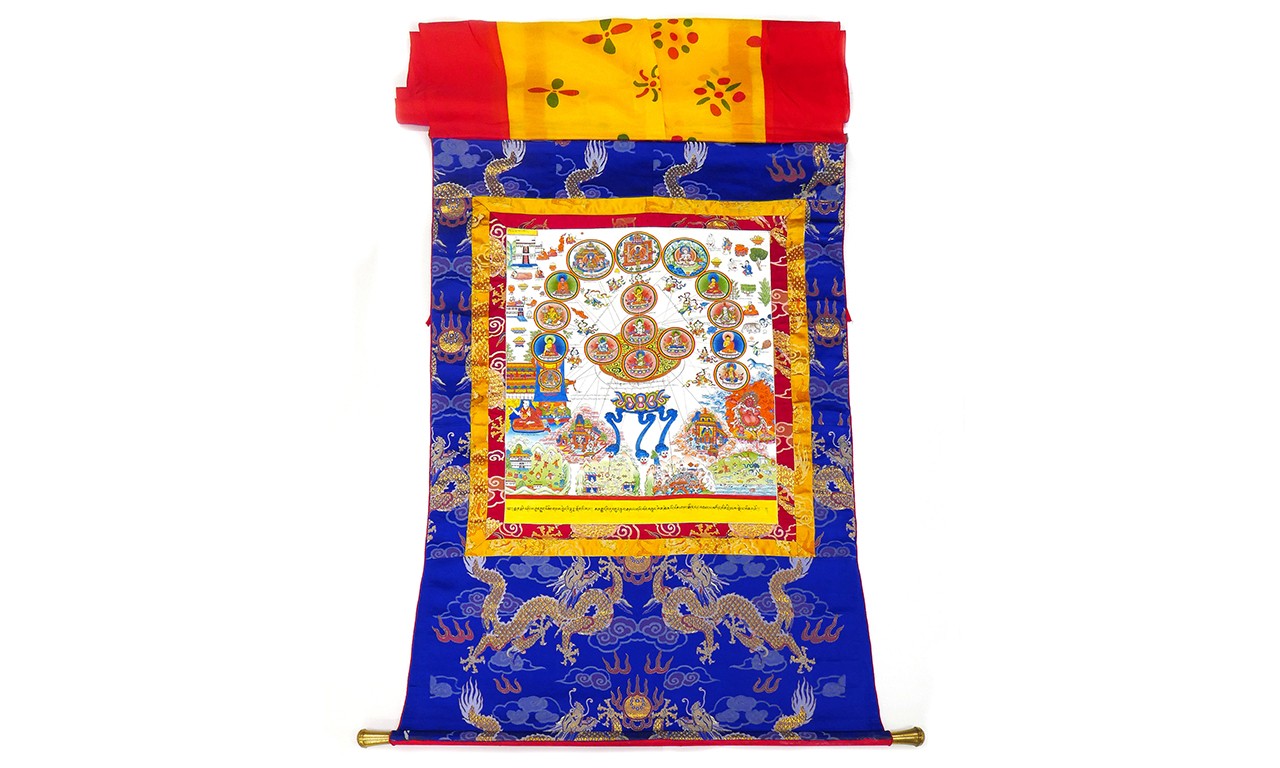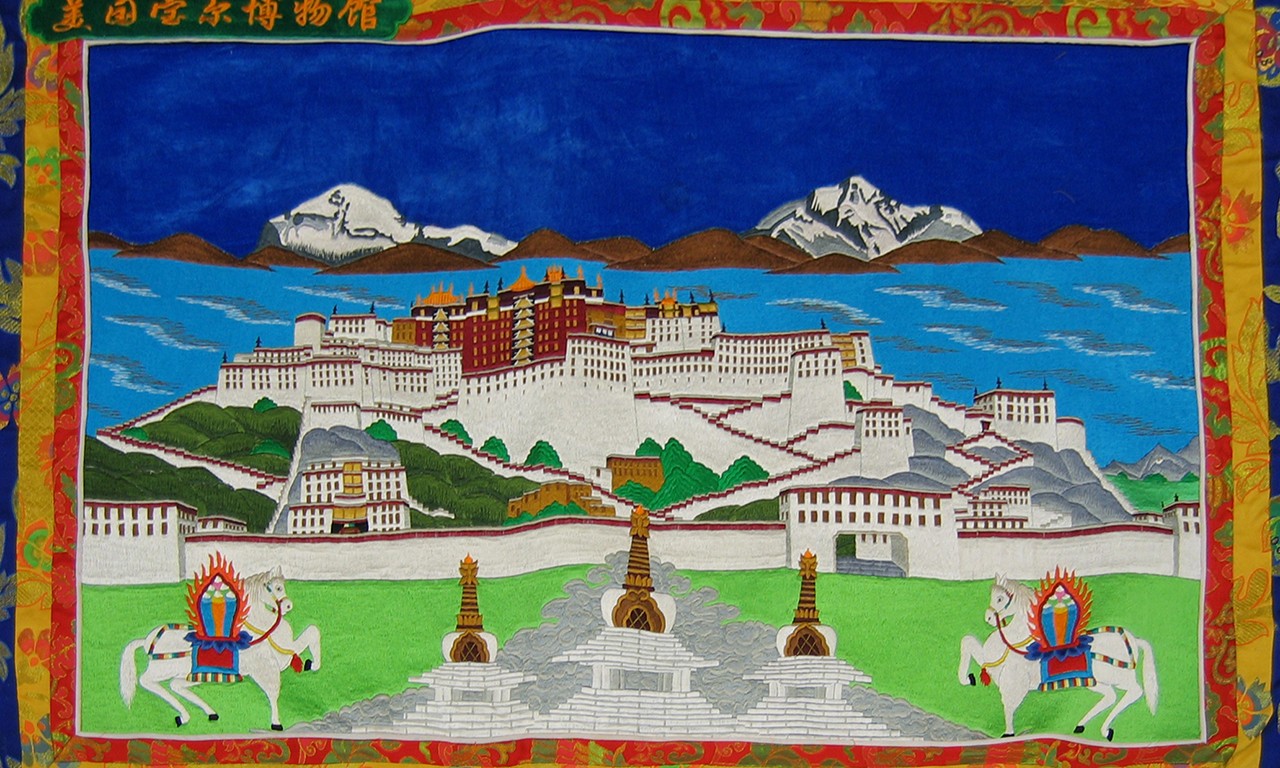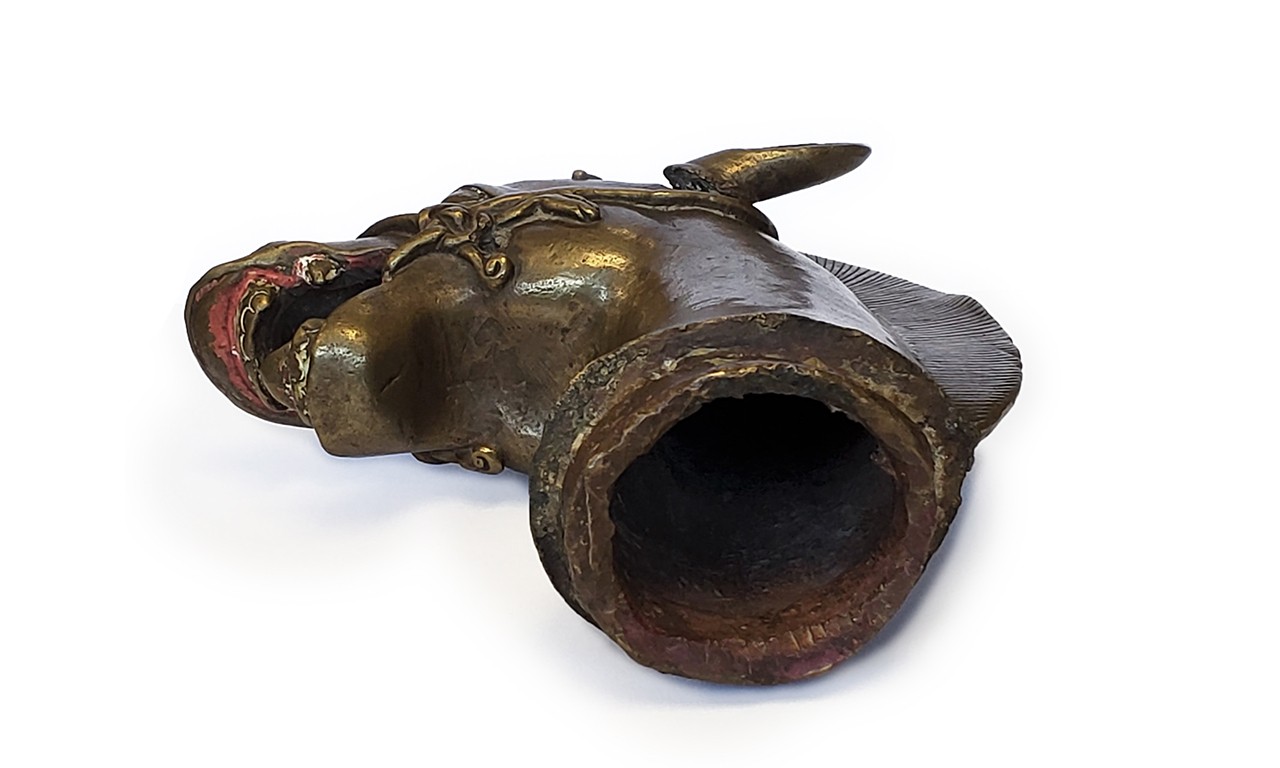New Acquisition: Looking a Gift Horse in the Mouth
 |
| Horse Head Sculpture, late 18th to 19th Century Tibetan culture; Tibet Autonomous Region, China Bronze and pigments; 13 1/4 × 2 1/8 × 5 1/8 in. 2021.5.1 Gift of Virginia Rooney |
Head Above the Rest
The Tibet Autonomous Region, referred to here as Tibet, is nestled against the Himalayas in the southwest of China. Backed by the roof of the world, the sprawling Tibetan plateau is home to a culture and canon of art that is unique from that of its neighbors. Here the most visually impressive buildings are palaces and Buddhist monasteries. Of the 6,000 some religious sites which existed before the Cultural Revolution, only 85 remain to date. Though many of these were small in scale, each served as a repository for artworks representative of Tibetan Buddhism. Large bronze sculptures of Buddhas, bodhisattvas, or other figures of the Buddhist pantheon serve as focal points to shrines decorated with the rich mineral wealth of the Himalayas. This post features a new Bowers acquisition which may have once come from a monastery: a brass horse head made in the 18th or 19th century.
 |
| Meditation Diagram Featuring Horse, late 20th Century Tibetan culture; Tibet Autonomous Region, China Distemper on linen cloth, silk brocade and metal; 60 1/2 × 47 × 2 in. 2019.12.1 Gift of Barry and Irena Gernstein |
Hoofing It Up to Tibet
We begin with the history of Buddhist sculpture in the region. Tibetan Buddhism dates to the late 8th century when it was introduced and spread by a series of three kings who have come to be known as the Dharma kings. Crucial to this post, the kings were patrons of the arts and brought many Buddhist artists from Kashmir, Nepal, and China into Tibet. A counter-reformation of sorts put a damper on Buddhist activity following the reign of the third king, Ralpacan, in 838 CE, but by the turn of the last millennium Buddhism was again in vogue. Over the centuries Tibetan artists created a synthetic sculpture style of their own. The most prestigious of these pieces were enormous and covered in gilt, some others were painted, but these principally important works served as aids for meditation. Sculptors still practice traditional sculpting to this day, creating works from clay and then using the lost wax technique to cast them in bronze. Almost no artists from the region sign works with their names which makes attributing individual pieces very difficult.
 |
| Potola Palace Framed by Horses, 2003 Lhasa, Tibet Autonomous Region, China Embroidered silk; 49 x 59 1/2 in. 2006.2.1 Anonymous Gift |
Except of Course for a Talking Horse
Horses regularly appear in Tibetan art for several reasons. The first of these is that as many as six different breeds of horses originated in Tibet and they are still regularly used for pack and riding. It is likely for these utilitarian uses that they appear in the Tibetan zodiac which does differ slightly from that of other Asian countries. As previously noted, most of the region’s sculptural works have featured Buddhist icons for over a thousand years now. Horses appear in multiple contexts in depictions of these figures. Palden Lhamo is the wrathful protector goddess of Tibet. She is sometimes depicted as riding a horse bearing a similar skull-shaped headpiece coming out of the mane. But other Tibetan gods also ride horses. One expert noted that Yamantaka—a violent aspect that Boddhisatva Manjushri assumed to kill the embodiment of death—also sometimes rides a horse, though they more commonly ride a water buffalo. Hayagriva, whose name literally translates to “horse-necked one,” is a popular deity in Tibetan Buddhism for his role in treating leprosy. Though his Hindu equivalent is often depicted as a being with a human body and the head of a horse, in Tibet he is almost always a wrathful deity.
 |
| Detail of 2021.5.1 Gift of Virginia Rooney |
A Close Look
The importance of this this horse head has yet to be definitively determined. A visual analysis of the object indicates that the horse head originally comes from a larger sculpture. The neck narrows sharply to indicate a place where it could have been socketed into either the body of a horse or a human. Assuming that the proportions were consistent with those of an average horse, the complete sculpture might be up to three feet tall. We can assume from the size and larger sculpting tradition of the region that the horse head would have been a smaller component in the depiction some Tibetan deity. It seems most likely that it would have depicted Palden Lhamo, not just because the horse wears a skull in its mane, but because the frenzied appearance of this horse is consistent with an animal being ridden by flaming deity. The presence of paint around the mouth and ears of the horse indicate that the entire figure may have been painted at one time, as was common for Tibetan sculptures.
Text and images may be under copyright. Please contact Collection Department for permission to use. References are available on request. Information subject to change upon further research.
Comments